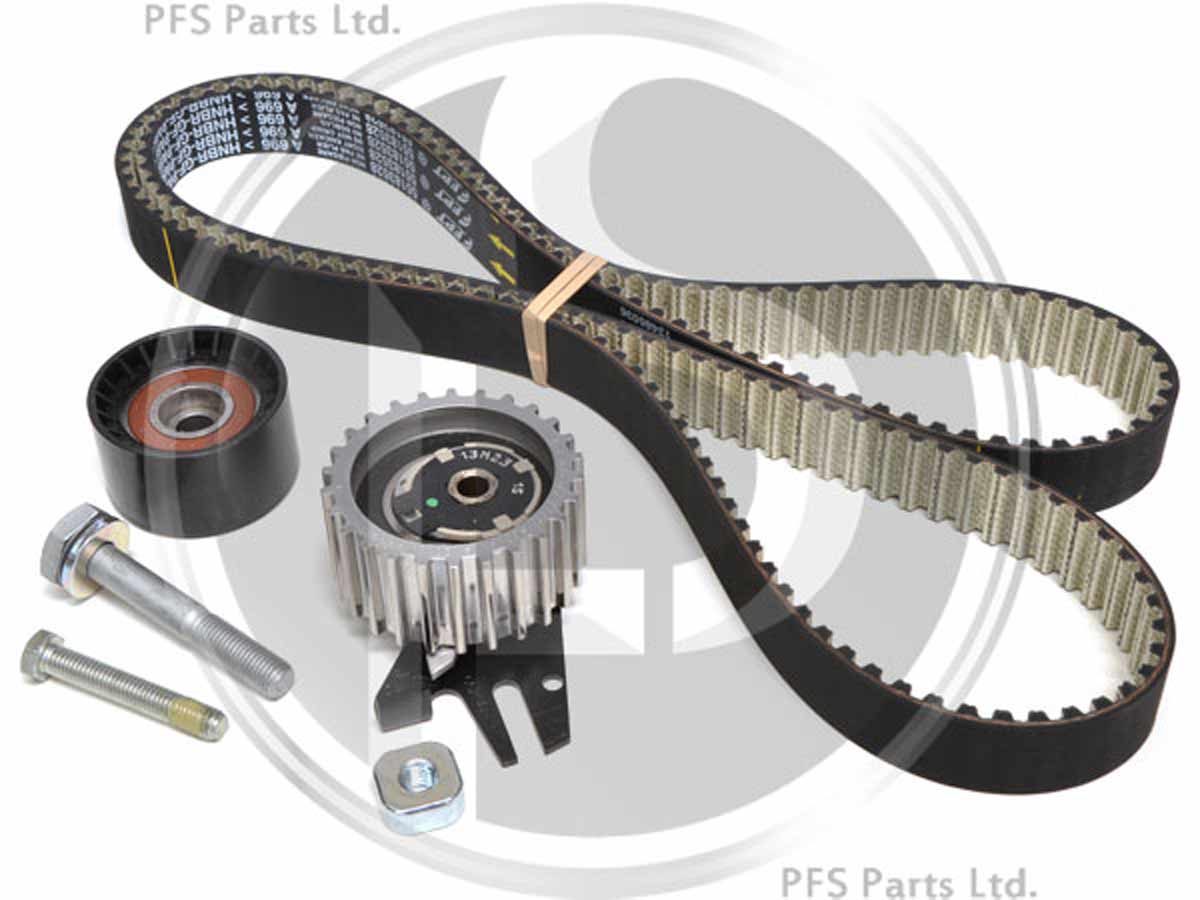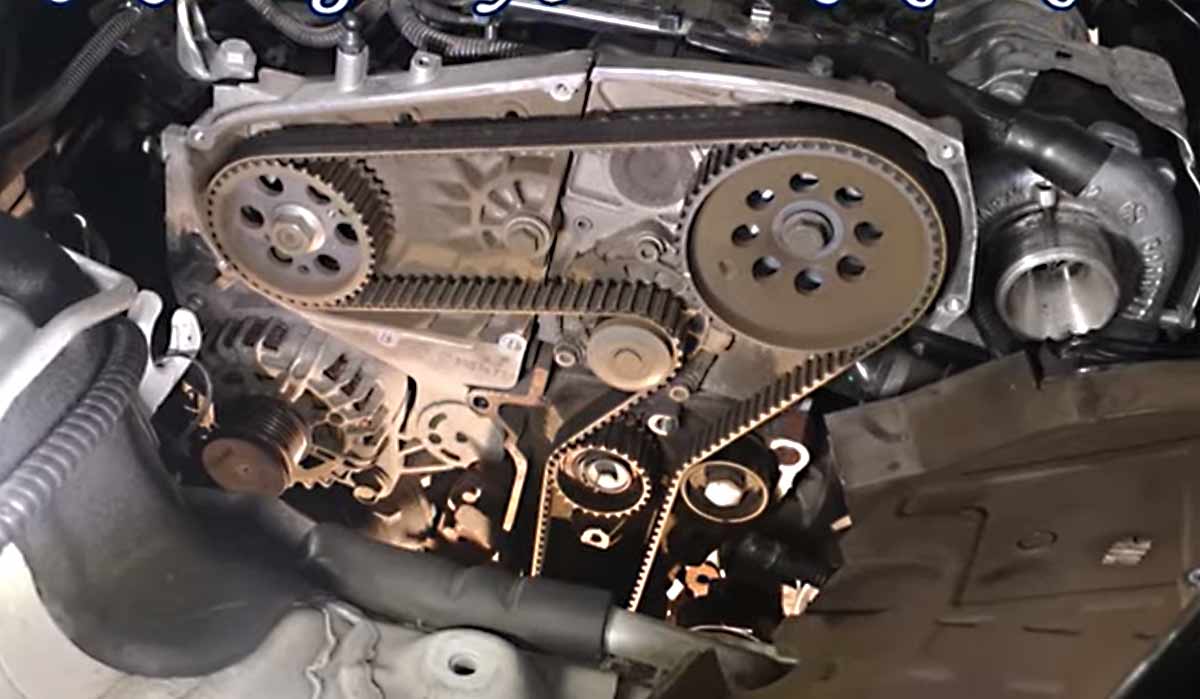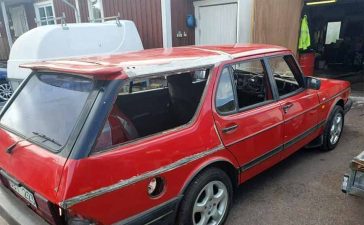Very often within the Saab community you will hear the question: “Does anyone know when to change the timing belt on a Saab 9-3 Diesel?”
This question primarily refers to Saab models with a diesel engines, because most Saab cars with a gasoline engine have a chain instead of a timing belt. One of our loyal readers asked this question, but before that he asked various Saab forums and authorized service technicians. The dilemma became even greater when he received many different answers, from ranging from five to 15 years or 40,000 to 100,000 kilometers?!
Table of Contents
Better to be safe than sorry
Unlike problems with clutch and brakes, it is very difficult to determine if something is wrong with the timing belt based on sound from it. Most timing belts need to be replaced after around 75,000 kilometers on the clock. This is a rough estimate as some timing belts may drop unexpectedly before that while others last 10 times longer. If you are unsure, always have a mechanic look at it and replace it if you find wear. The cost of a new timing belt with assembly will be much lower than the cost of repairing a damaged engine if the belt releases.
Important facts about the timing belt
The best way to check the condition of the timing belt is to look at it. By opening the bonnet and removing the cover that protects the belt, you should be able to make a visual assessment and see if a replacement is needed. An indication that the belt must be replaced is wear on the outside of it. An even clearer indication that the timing belt needs to be replaced is if you see thin stains or cracks in the synthetic rubber.
Timing belts do not gradually stop working over time. It is such an important part of the car’s engine that it does not matter if the belt releases completely or some of its teeth come loose, the result will be the same: the car will not work until the belt is replaced. It is enough for a pair of teeth to come off the cam belt so that it cannot grip the head on the cam and crankshaft properly.
To prevent your timing belt from coming off unexpectedly, it is best to have it replaced regularly. If you change the belt after every 75,000 km of driving (In the general case), that should be enough and you can avoid worrying. If you are going to take the car on a long journey, it is a good idea to let a mechanic look at the timing belt before you drive away.
When should the timing belt be replaced on a Saab (TiD or TTiD)?
And we come to a concrete answer to a specific question, that is, how this question is regulated in Saab diesel cars.
For both the Saab 9-3 TiD and TTiD, the longest interval for changing the camshaft belt is 10 years or 92,000 miles (150,000km), whichever comes first. The official interval is every 92,000 miles. We will take this data conditionally, and let it be your last limit when you need to change the timing belt, the recommendation is of course that it will be earlier or as soon as you notice the wear of the belt.
Here we will consult Saab’s knowledge base WIS, it says the following:

It should be remembered that this is a recommendation regarding the longest interval before a change is to take place, which means that the manufacturer does not guarantee that the belt will last this time period or mileage.
How much does it cost to change a timing belt?
Prices for timing belt replacement can vary depending on the car model and workshop, so it is difficult to say what it costs. But on the other hand, there can be lots of money to be saved.

You can get Timing Belt Kit – OEM, for example, in specialized Saab spare parts stores for around 90 or 100 euros, but these kits do not make a very important component, and that is the water pump. When replacing the timing belt, but also before that, and more often, be sure to replace the water pump, which can cause big problems.
Diesel engines installed in Saab cars are extremely reliable and durable, and they suffer everything, but they do not suffer from irregular maintenance and unregulated service.












75 000 km sounds a bit too low to me.
I’ve replaced the cambelt, water pump and their accessories every 100 000 kms.
It really depends on the roads you’re driving on.
Some of those tarmac/asphalt roads could expose the dust which is harmful for cambelts.
If you’re aware of those kind of roads, then I’d suggest to replace the cambelt and the water pump every 75 000 kms.
Earlier I always thought I’d never purchase a car (especially SAAB) which has a cambelt because I was really worried about its durability. After seeing the photos of damaged/broken NG9-3 timing chains I changed my mind.
It costs approx. 3000-4000 € to replace the timing chain, 450-700 € to replace the cambelt. Of course SAAB claimed their timing chains of T8 would be “perpetual” but that was not the case in the real life.
I’d rather replace the cambelt every 100 000 kms than listen to abnormal noises generated by timing chain and be afraid it’d break.
So I’ve totally changed my mind during the last two years.. I dislike the idle sound of a diesel engine but otherwise the 1.9/2.0 T(T)iD engines are so durable I wouldn’t go back to petrol engines, especially NG9-3/NG9-5. IMO B204/B234 was the last really durable SAAB engine.
And yeah, I have NG9-5 TTiD and NG9-3CV TiD.
Thanks for sharing the experience with the Saab community!
You’re welcome mate 👍
Hello.
When should I change chain on my 9-3 1.8t 2007
Regards
Dejan
On my 9-3 TTid cambelt and what comes included (pulleys, tensioners and water pump) was replaced on 100.000km. I’ve used continental kits for ttid engines. Price under 400€ with labour.
It’s the WM engine.
The same interval, for example, as the Alfa Romeo 1.9 tdi.
80-100,000 km
TO Tomislav Perić >
here in sweden we say 150000 km. But in The 9-3 i have seen already needed around 120-130000 km.
My 9-5 is still okej after 135000km, but i Will change it later this year anyway.
TO Göran Bergenbrant >
I have been a pure Saab general importer and authorized repairer for as long as it has existed.
If driven normally, it goes up to 130,000 km.
If you remove the side protective cover, you can clearly see the condition of the toothed belt and how much pressure it is lowering on the toothed pulleys.
Otherwise, it’s about 4-4 1/2 hours of work to replace everything.
Pay more attention to the intake manifold.
Otherwise they go swirl.
I think all car with timing belt 90.000km or 5year…
The best interval..
Every 150000 km. and remember to change the waterpump at the same time 👍
Ten years or 160.000 km, if I remember correctly
I tested to not do it, 210000 km, then it broke
just about the same time as on a SAAB six-cylinder, I would guess. The rear-wheel drive models need extra service
Before it brakes would be the best idea
I have a 9-5 2.2TiD.
Its Timing Chain (NOT a Belt) has stretched and I need to change it.
Is there anyone on here who can give me information based upon their experience on how to change the Timing Chain please?
I have access to the WIS but I’ve seen many YouTube videos where the Timing Chain on similar Opel/GM diesel engines can be replaced simply via access to the Crankshaft/Timing Chain chamber and the Rocker Box whereas the WIS says you have to drop the Sump and remove the Head which seems way too much work.
So, can anyone give advice please?